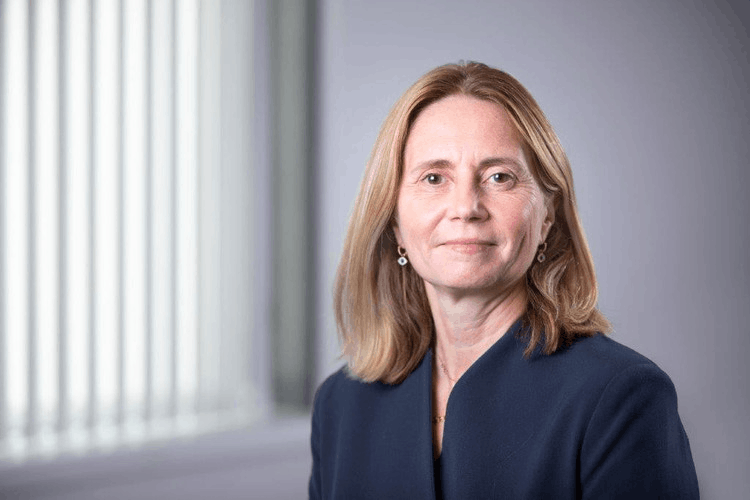Open architecture is when a financial institution offers clients both in-house and external products. Daniela Klasen-Martin, CEO of Credit Suisse Fund Management and head of fund platform services, Credit Suisse Asset Management, explains more.
Take, for instance, “a smaller asset manager or a boutique alternative asset manager, say, a PE [private equity] asset manager who does not have a base in Europe” she says. “If you don’t have a base in Europe, then you cannot sell using the AIFMD [Alternative Investment Fund Managers Directive] passport. Basically, you cannot distribute. To distribute, you need to have a regulated management company, and therefore, if you do not want to invest in your own operations--in Luxembourg or Ireland or wherever in Europe--then you can have an open architecture solution. So you can appoint a third party manager.”
Continuing with her example, Klasen-Martin explains, “The portfolio manager--this PE manager--would launch a fund. They will still control this fund at GP [general partner] level by appointing the members of the board,” she says, “but they would appoint this third-party manager to perform all of the regulatory activity as part of their responsibilities as regulated AIFM.”
“The core functions of the AIFM are portfolio management and risk management. They would generally retain risk management and delegate fully or partially portfolio management back to this portfolio manager, who may be licensed somewhere else.”
“And what would that third-party manager retain? They would retain the control. It means that you can delegate that portfolio management activity, but you would retain full responsibility towards the regulator and therefore you need to ensure that you implement a strong oversight function. And that’s really the key of this sort of activity.”
So how does this help investment firms?
Investment firms--for various reasons, such as cost or personnel--may not want to invest in a fully-fledged operation in Europe. “If you are a PE manager and want to establish a regulated AIFM,” says Klasen-Martin, continuing with her previous example, “then you need to have within the AIFM some senior managers who actually understand that asset class.”
“It’s complicated to find the people with the right expertise. So you need to invest,” she says. But “you may not want to do that, because you want to concentrate on what is your core activity, which is actually managing your portfolio and ensuring that you deliver performance.”
What’s interesting is that “you can have those white label solutions that can take care of all of the regulatory [activities]--they basically constitute this regulatory wrapper that enables you to launch a fund and then to distribute to investors using the EU passport.”
Opening up opportunities
Real estate and PE benefitted a lot, says Klasen-Martin. With the AIFMD and the European passport, “this world was opening, a whole remit of opportunities for portfolio managers, for asset managers to distribute freely in Europe. But to do so, you needed a robust solution. And that’s why it’s been very good for PE and real estate to have those solutions at hand, to be able to tap into those opportunities.”
Open architecture can help investors as well. “It depends a little bit on the models,” she elaborates. White label solutions--with third-party management companies--are “independent.” “This independence actually decreases the conflict of interest that you may have within a fund structure, and throughout the value chain of a fund.”
Key to “invest in the right people”
Open architecture has become something that people know, says Klasen-Martin. “A few years ago, people wouldn’t understand what this was. Now, people understand what it is. So, I see that it will continue, but it faces challenges.”
A third-party management company works with “a whole remit of portfolio managers”--10, 15, 20 or even more, depending on the size--and works with a variety of fund administrators as well. “The whole challenge is to retain that control, through oversight. And that oversight becomes complex when you have so many different parties, delegates that you need to oversee.”
It is therefore key to “invest in the right people,” as well as in systems and technology. With the consolidation in the market, there are now “quite a few big conglomerates, and most of them also diversify in offering technology solutions for oversight, production or reporting.”
“Scrutiny is important”
No specific regulations govern open architecture, she notes. “Management companies--whether they are white label solutions or in-house solutions--they need to be compliant to the same regulation,” in this case, the AIFMD.
Klasen-Martin doesn’t anticipate any specific regulation, either. “There has [been] some focus at Esma [European Securities and Markets Authority] level about white labels at some point in time, as the model has been evolving as a recognised solution. However, clearly, the regulatory requirements are the same, whether you are a third-party or an in-house management company.”
“But obviously, the scrutiny is important,” she adds. “Regulatory-wise, it’s a little bit more complicated for a third-party player, because of the fact that you multiply all of your delegations.”
Looking ahead
‘Is there still space for open architecture to evolve?’ I ask Klasen-Martin at the end of our interview. “It’s now, I think, more of a mature model, and I see a lot of consolidation. I think it’s going to be very difficult for a new player coming in,” she replies. Substance requirements and competition are high. “I wouldn’t see the interest for smaller, new players to come in. But I think that the model will continue evolving.”
“Possibly, there is still space for very, very specialised third-party managers, possibly. But then they need to be extremely specialised, maybe a specific asset class.”
Cryptoassets present a possibility. “There, you could have some very specialised players, because this is so specific in terms of the knowledge, in terms of the risk that you take as well,” she adds. “So maybe, maybe there’s still space for some very, very specific type of assets where other players may not have the appetite, nor the expertise.”
.
